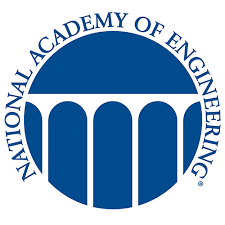Media Watch Archives
Nationwide flood models poorly capture risks to households and properties
Insurance Newsnet -
In a paper published recently in the American Geophysical Union journal Earth’s Future, experts in UC Irvine’s Department of Civil and Environmental Engineering caution that relatively new, nation-scale flood data provides an inadequate representation of local topography and infrastructure, factors known to control the spread of floods in urban areas. “In our analysis of Los Angeles County…we found that estimates of countywide flood exposure from the nationwide data are actually similar to what we find with our more detailed models. However, predictions of which communities and properties are at risk are markedly different,” said lead author Brett Sanders, UC Irvine Chancellor’s Professor of civil and environmental engineering and professor of urban planning and public policy. Read More
How the Bay Area will contribute to California’s new ‘hydrogen hub’
Silicon Valley.com - The Mercury News -
To reduce reliance on fossil fuels in industries where electricity is impractical, unreliable or too expensive, California is building a massive “hydrogen hub” to generate a steady supply of an alternative fuel with no carbon emissions — bringing us closer, say advocates, to a completely green future. “It’s the beginning of the investment that must be made if we are to meet our zero-emission policy goals,” said UC Irvine engineering professor Jack Brouwer, director of the university’s Clean Energy Institute and an interim director for business development on the hub’s leadership team. Read More
Nationwide flood models poorly capture risks to households and properties
NewsGram -
“In our analysis of Los Angeles County, which has a population greater than 40 U.S. states and includes over 80 separate municipalities, we found that estimates of countywide flood exposure from the nationwide data are actually similar to what we find with our more detailed models. However, predictions of which communities and properties are at risk are markedly different,” said lead author Brett Sanders, UC Irvine Chancellor’s Professor of civil and environmental engineering and professor of urban planning and public policy. Read More
Researchers enhance tool to better predict where, when wildfires will occur
Chronicle and Chief -
The Fire Program Analysis Fire-Occurrence Database was developed in 2013 by the U.S. Forest Service and since been updated five times. It incorporates basic information such as ignition location, discovery date and final wildfire size. The revised database now includes many new environmental and social factors, such as topography and vegetation, social vulnerability and economic justice metrics, and practical attributes such as the distance from the ignition to the nearest road. … Other co-authors of the paper are … Amir AghaKouchak, University of California, Irvine. Read More
The business of beaches: leaders gather to discuss impacts of a disappearing coast
The Orange County Register -
A group gathered at the UC Irvine one recent day to discuss the “Business of Beaches,” drawing politicians, planners, educators and economic experts to brainstorm ideas to tackle a problem — the shrinking supply of sand that makes up much of the region’s beaches — that could have a domino of disastrous impacts. … While there’s much talk about climate change and the role sea level rise will have in threatening the coastline, the problem is rooted in poor infrastructure design dating back decades — and it can be fixed, according to Brett Sanders, professor of civil and environmental engineering, urban planning and public policy at UC Irvine. Read More
The National Academy of Engineering Launches Editorial Board
National Academy of Engineering -
The National Academy of Engineering (NAE) has formed the new NAE Editorial Board composed of NAE members and leaders in engineering and science communication across industry and academia. The NAE Editorial Board will offer invaluable guidance as the NAE strives to boost the reach and impact of its publications, enabling the NAE to disseminate high-quality content pertaining to its mission throughout the engineering community and beyond. … On the board is Diran Apelian, Distinguished Professor, Materials Science and Engineering at UC Irvine’s School of Engineering. Read More
Predictions for Small-Scale Turbulence
Physics Magazine -
Large-scale turbulence is causing new headaches for anxious aviators in a warming atmosphere, but it’s small-scale turbulence that has always made physicists scratch their heads. The cascading process that transfers energy from the biggest eddies down to the tiniest ones causes a turbulent flow at the small scale to retain no memory of the large-scale flow structure. Because of this memory loss, researchers often assume that small-scale turbulence is isotropic. Subharthi Chowdhuri and Tirtha Banerjee of the University of California, Irvine, now introduce a framework for investigating turbulent flows and show that anisotropy persists even at the small scale. Read More
NASA Awards Support STEM Research at Minority Serving Institutions
NASA -
NASA has selected 23 minority-serving institutions to receive $1.2 million to grow their research and technology capabilities, collaborate on research projects, and contribute to the agency’s missions for the benefit of humanity. … The awardees are as follows: … University of California, Irvine - Flexible Modular Robots for Extreme Access …. Read More
4 Challenges For Transforming Manufacturing Through AI
Industry Today -
Pramod P. Khargonekar, ERVA Co-Principal Investigator; UCI Distinguished Professor of Electrical Engineering and Computer Science and Vice Chancellor for Research writes, “The power of artificial intelligence to transform industry is often taken as a given. However, there is a gap between expectations and implementation that many industry leaders are not addressing. One essential element in the AI transformation equation is the need to proactively bridge two crucial fields: AI and engineering.” Read More
Higher-ed plays a crucial role in filling AI engineering needs
ECampus News -
“This emerging fusion of the AI and engineering fields represents a profound opportunity to make breakthrough research advances as well as to address some of the most pressing challenges facing society today,” said Pramod Khargonekar, professor of electrical engineering and computer science and vice chancellor for research at the University of California, Irvine, and chair of the visioning event. “By leveraging AI to enhance engineering research and innovation and vice versa, we can achieve unparalleled progress and create a brighter future for all.” Read More










